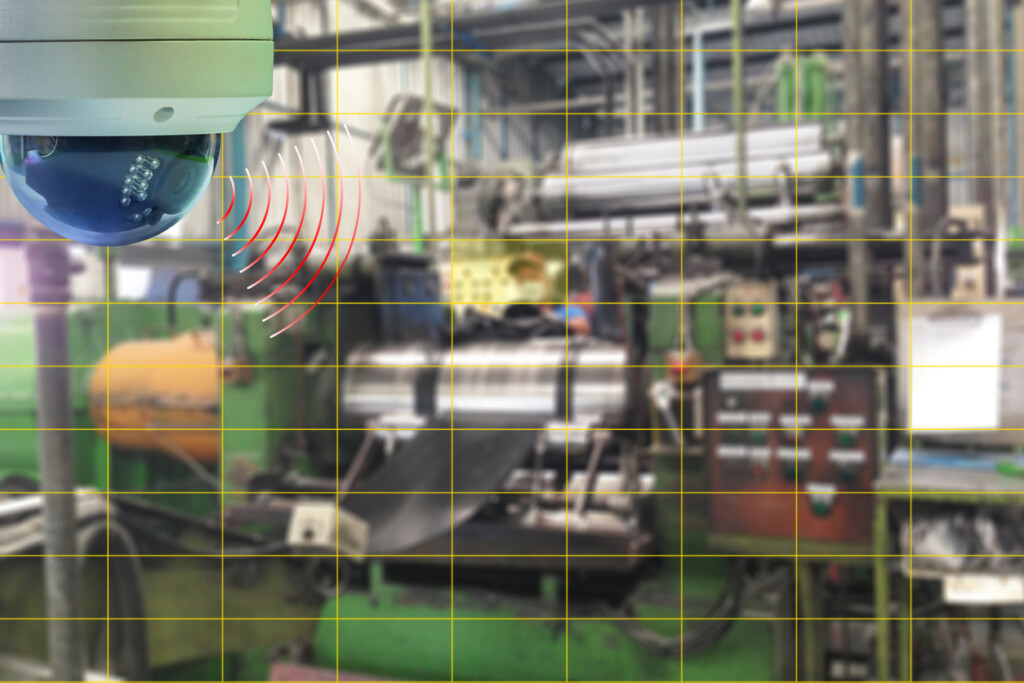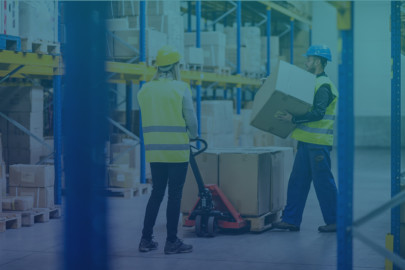Real-time Inventory Management: Harnessing Technology for Efficient Order Fulfillment
Real-time inventory management combines several technologies to provide the most current and accurate information on inventory levels. These technologies include barcode systems and radio frequency identification (RFID) tags. The Internet of Things (IoT) adds sensors, Global Positioning System (GPS) trackers, and smartphones for inventory tracking.
Bringing emerging technologies such as artificial intelligence (AI), machine learning, and robotics into the warehouse increases inventory automation capabilities. Taking advantage of cloud computing and data analytics can move inventory control into predictive inventory management.
Having up-to-date information allows businesses to respond quickly to changing demands to avoid running out of stock or paying to store slow-selling merchandise. Real-time inventory management automates time-consuming manual systems. It reduces errors from poor data entry or miscalculations. It also aligns with fast-moving eCommerce, where consumers expect next-day delivery.
What Technology is Needed for Real-Time Inventory Management?
An inventory management system needs a way to identify inventory items, a method for monitoring their movement, and a process for controlling the ebb and flow of merchandise. While some solutions have existed for decades, others are just beginning to be used in the logistics industry. What has changed is the integration of technologies to create technology-driven order fulfillment. Let’s look at how technology is changing three areas of inventory management.
Identification
Barcoding and RFID tags have been used in inventory control systems for decades. Both have changed since their initial implementations to become an integrated part of advanced inventory systems.
Barcodes
Companies have used linear barcodes since the 1950s. It’s a one-dimensional series of values that contain information about the item. In the mid-1990s, matrix barcodes were introduced. This two-dimensional barcode includes the popular quick response (QR) code that provides more information on a product than a linear code. QR codes can be static, where the data cannot be changed, or dynamic, where the code links to another source of information.
Scanners are used to read both linear and matrix barcodes; however, mobile apps enable smartphone cameras to act as scanners. The flexibility in scanning capabilities makes it easier for staff to track merchandise from the warehouse through to delivery.
RFID
RFID systems consist of tags and readers that communicate using wireless technology. The readers actively send and receive electromagnetic signals from tags, which contain identifying information that can be forwarded to a database for processing. The automatic reading of tags allows information to be fed into the system without the need for human intervention.
Aside from its serial number, RFID tag data can be updated. Changes in location can be transmitted in real-time to ensure accurate inventory tracking. The most popular tags use self-generated power for data transmission up to 80 feet. RFID tags that require an external power source can transmit over distances above 300 feet. Multiple RFID tags can be read simultaneously as opposed to barcodes that must be read one at a time, making for efficient inventory tracking.
Light Fidelity (LiFi) Technology
LiFi is a form of wireless communication that uses the light spectrum to transmit data. The technology modulates the intensity of light generated by light-emitting diodes (LEDs). It uses the LED’s visible light spectrum for communications, which enhances transmission speeds and bandwidth.
The technology can be deployed in warehouses to enable communication using LED lighting. In large warehouses, the technology allows robots to locate merchandise quickly. Because it uses light, LiFi has minimal signal interference and reduces cybersecurity risks from hackers. Fluctuations in light intensity are undetected by the human eye.
Monitoring
Inventory management is more than knowing what is available. It’s also knowing where the items are located. In today’s fast-paced market, merchandise must move quickly to meet consumer expectations, requiring technology to expedite the process.
IoT
The Internet of Things (IoT) refers to devices that connect to a network using the Internet. These devices range from smart TVs and cameras to thermostats and sensors. Using IoT solutions in logistics can provide better visibility throughout the supply chain.
For example, maintaining consistent environments across large warehouses can be challenging. Placing sensors at different points allows managers to track fluctuations in temperature and humidity. In extreme cases, merchandise can be shifted to ensure a proper storage environment. Putting sensors in cold storage areas ensures that the correct temperature is maintained.
Warehouse operators can use smart cameras to view their facilities 24/7, with video stored in the cloud for easy access anywhere with an internet connection. Managers can check the building’s status after hours or in case of an emergency, ensuring inventory is stored safely as the first step towards exceptional order fulfillment.
Predictive Maintenance
Whether integrated sensors or software applications, technology can minimize operational disruptions. Sensors can detect temperature increases in equipment that might indicate excessive friction or misalignment. Software applications can track usage to predict when maintenance may be required.
Identifying problems before they happen prevents unexpected disruptions, leading to delays in order fulfillment. Anomalies in equipment operation can alert maintenance crews, who can then check the equipment and schedule repairs if needed, with little impact on delivery schedules.
GPS Tracking
GPS devices use the Global Navigational Satellite System (GNSS) to find an object’s location on Earth. The process called trilateration uses the positions of three or more satellites to calculate an object’s longitude, latitude, elevation, and at a point in time. GPS navigation systems utilize the system to provide directions to a specific destination, while GPS tracking devices record travel history and current location. The data obtained from GPS can then be sent to an application for display or analysis.
When moving inventory from one location to another, GPS tracking records the transport path or displays the status in real time. Active trackers provide real-time information on shipments, while passive trackers record the information for later use. GPS provides another avenue for tracking inventory, whether in transit or in storage.
Management
Real-time inventory management requires advanced inventory systems. It needs solutions that identify merchandise and monitor data for better visibility and streamlined order processing. Warehouse or inventory management solutions are not new. Their functionality can vary from simple inventory calculations to end-to-end management systems. However, artificial intelligence, cloud computing, and data analytics are three emerging technologies that help optimize fulfillment operations.
Artificial Intelligence
AI applications have enabled automation throughout the supply chain. Automated guided vehicles and autonomous mobile robots can cruise warehouse floors faster than their human counterparts. AI helps devices navigate aisles, locate items, and select merchandise with greater accuracy. Plus, AI works with monitoring technologies such as GPS to optimize routes. AI can look at existing road conditions and reroute vehicles to avoid accidents or construction delays.
Inside the warehouse, AI can provide insights into operating procedures. It can highlight potential bottlenecks or routing patterns that slow processing times. It can receive equipment alerts and schedule maintenance crews without human intervention. The technology can assist operations in streamlining order processing and inventory control.
Cloud Computing
AI needs volumes of data. The more data, the more accurate the results. That level of processing power is difficult to achieve onsite. That’s why cloud computing has become part of the logistics landscape. With its scalability, the cloud can adjust resources as needed to process large datasets, allowing real-time access to information.
Cloud-based management systems allow logistics providers to share data with their customers as well as their employees. Clients can access information on their products through a web portal. They can look at inventory levels, research historical data, and check on current shipments. By sharing data, logistics providers can better serve their customers.
Data Analytics
Adding AI to the mix of technologies advances inventory systems beyond the warehouse. It enables logistics providers to deploy data analytics to learn more about their operations. Using predictive analytics, 3PLs can determine inventory patterns that were not easily discerned. Analytics can also enhance supply chain visibility.
A McKinsey study found that 85% of companies struggled with insufficient digital technologies throughout the supply chain. Organizations were unable to track merchandise from order processing to delivery. There were points in the process where data was inaccessible because tools were not available to manage the data. Making data analytics part of an inventory management system allows for continuous improvement.
Bringing Technology Together
Real-time inventory management encompasses multiple technologies that require a plan for successful implementation. Whether 3PLs use existing identification technologies or deploy new ones, real-time inventory data needs merchandise identifiers. Once identifiers are in place, a warehouse needs a way to track an item’s movement while in storage.
Tracking methods include satellite signals, light frequencies, radio waves, and wireless technologies. Developers are creating new tracking methods to enhance visibility throughout the supply chain. For instance, they deploy GPS tracking devices to monitor cargo on sea-going vessels and attach IoT sensors to shipments to track both environmental conditions and location.
AI applications track last-mile deliveries and analyze processes to streamline operations. Moving to cloud-based systems, 3Pls can provide their customers with access to real-time data on delivery status. They can interface with consumer-facing applications so arrival details can be shared online.
Bringing technologies together is the future of logistics. Without integration, organizations risk falling behind. If you’re looking for a technology-first logistics partner, contact us to discuss how we can keep your business competitive.










